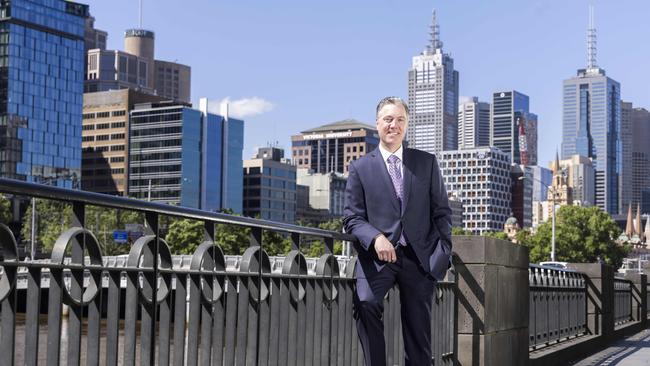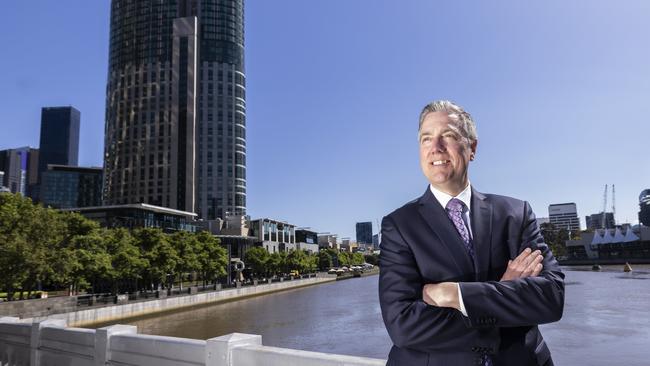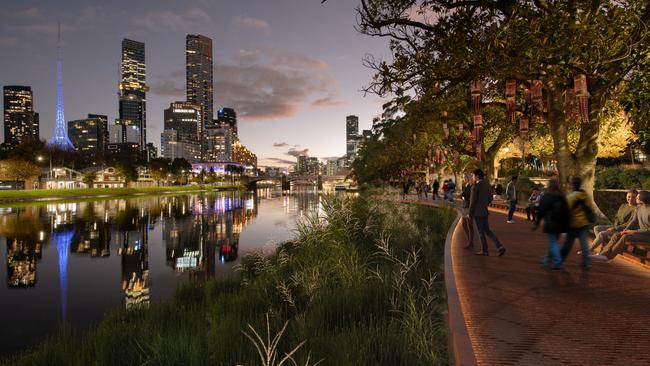Future Melbourne: Yarra River revitalisation key to Melbourne’s future growth
Business leaders believe Melbourne’s ‘gorgeous natural asset’ is key to the city’s future growth.

Victoria
Don't miss out on the headlines from Victoria. Followed categories will be added to My News.
The revitalisation of the CBD after Covid-19 should focus on better using the Yarra River as a key drawcard, business and council leaders say.
And a proposal for a community-led project to advise how to capitalise on the iconic river has emerged, with a call to consider new pop-up restaurants and event spaces, waterfront infrastructure, and cheap on-water transport between landmarks.
Crown Melbourne chief executive Mike Volkert, who has shifted to Melbourne from the US where he ran Vegas and Florida casinos, said he was struck by the “gorgeous” natural asset that could lift visitor numbers even if fewer people worked in the CBD.
“We know the CBD is gonna be different. We know how people work is different,” he said.
“I think this has been a catalyst for us to think about how we want to reprogram downtown.
“It has to be a community effort, you know, we’re happy to sit in a room and share ideas and be a part of the conversation.”

Lord Mayor Sally Capp backed the push for a renewed focus on the Yarra and said the council’s Greenline Project — a 4km promenade of parks, open space and cultural activities on the northern side of the river between Birrarung Marr and the Bolte Bridge — would reinvigorate the precinct.
“Our iconic Yarra is at the heart of Melbourne and our Greenline Project will create a once-in-a-lifetime opportunity to shape the city forever,” she said.
“The Greenline Project will revitalise the north bank of the Yarra River — creating thousands of jobs, attracting waves of new visitors, and injecting millions of dollars into our economy.”
Mr Volkert said he did not want to be “prescriptive” about specific concepts, but there were plenty of examples around the world where cities leveraged riverside locations.
This included in Florida, where he previously lived and which locals called the “Venice of the west”.
“One of the fun things we could do is … just hop on a water taxi, and it was really cheap and came by every 30 minutes or so,” he said.

“It just had these various stop off points, and you could hop on and then jump off and it’d be a great restaurant right there.
“The river just became kind of like this central conduit, a corridor that really kind of enabled people to explore the city.”
Mr Volkert also pointed to a small theatre erected on “the strip” in Vegas that plays shows to 500 people, and pop-up ‘no-brand’ restaurants where local chefs take charge.
“I think (post-pandemic) is an opportunity for us to kind of recognise that the (CBD) environment’s changed,” he said.
“What kind of city we’re going to have in the future? And how are we going to have a world class city with world class entertainment, and really create something that people want to come down here?
“It doesn’t matter if you’re local or international guest, you know, it’s really an attraction for people to want to come down to see this area, because we’ve gotten together and, you know, as a community, and really rethought about how people use this space.”
“Let’s create a dialogue between various groups, and see what was possible.”





